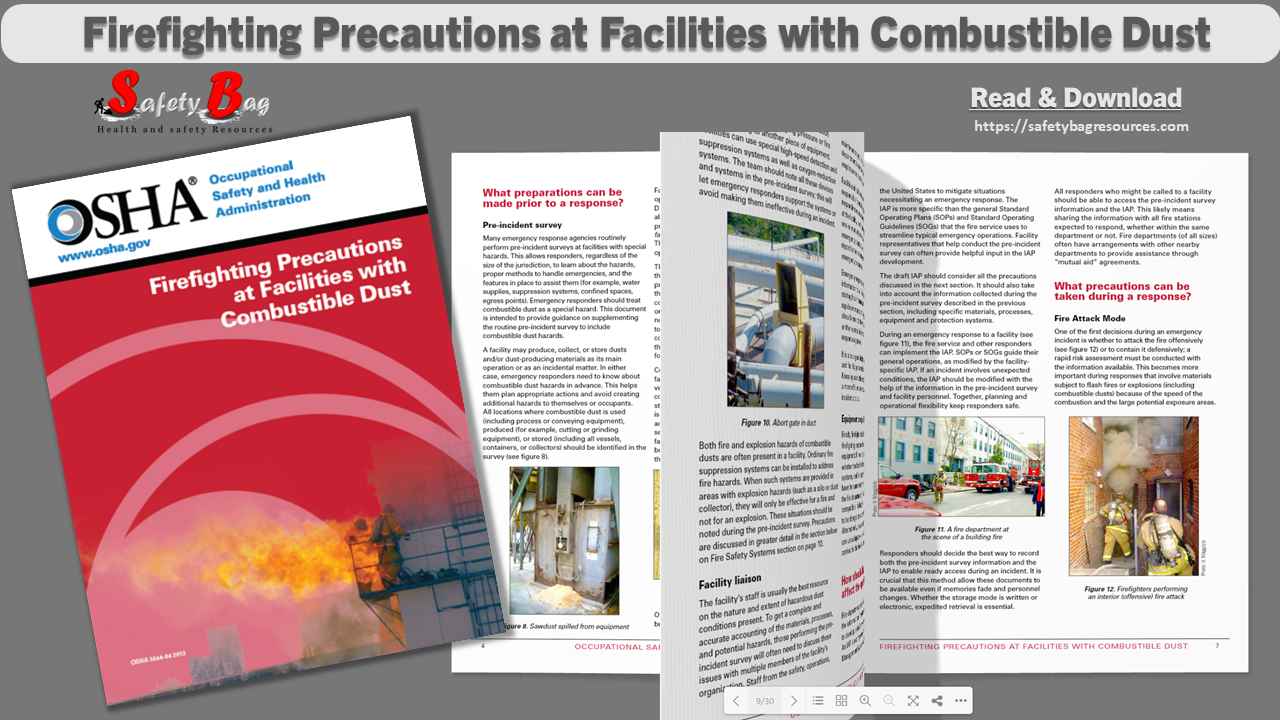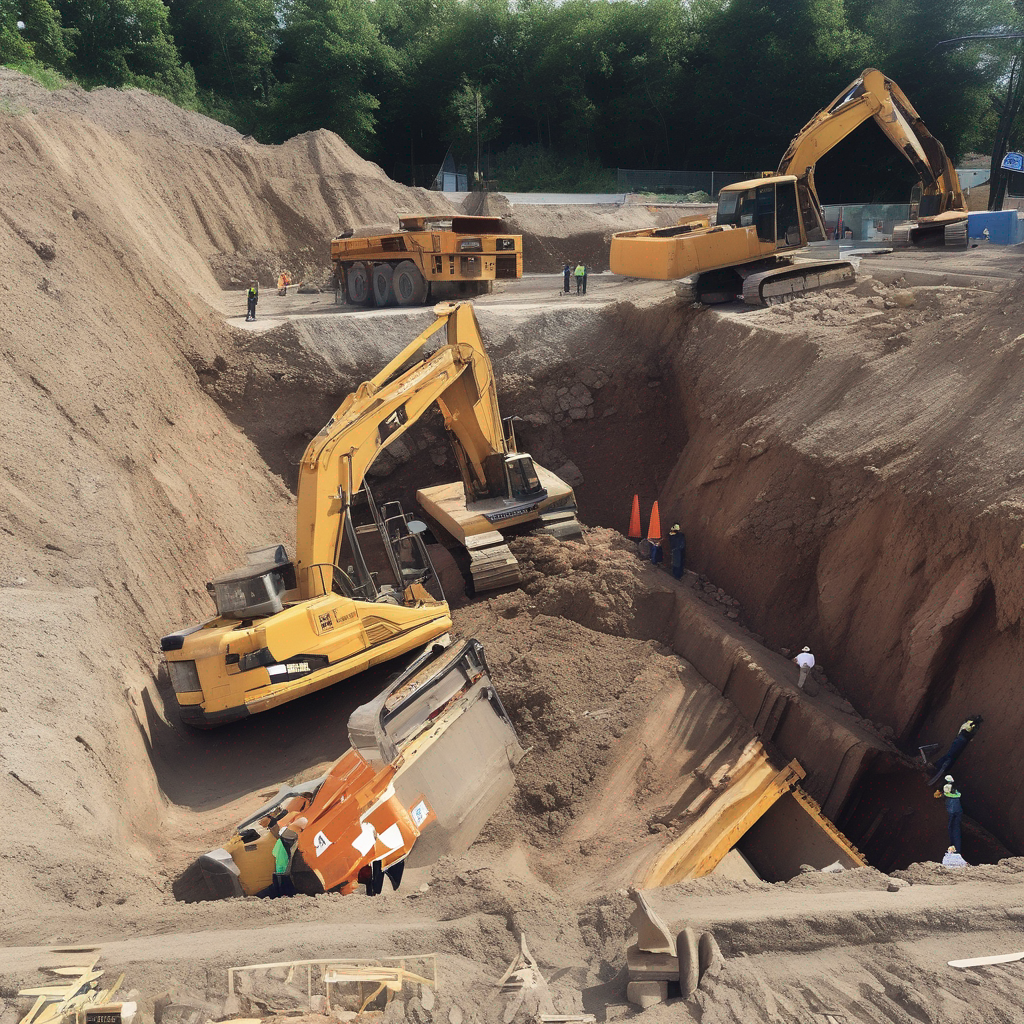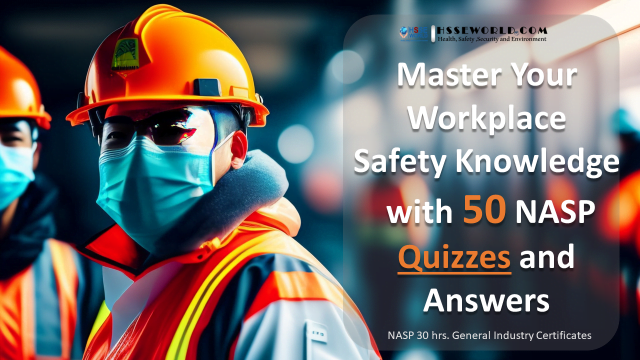
OSHA Recommended Practice of Health and Safety programs in the construction provide responsible employers, workers, and worker representatives1 with a sound, flexible framework for addressing safety and health issues on diverse construction job sites. They may be used by any construction company or job site, but they will be particularly helpful to small and medium-sized contractors. They also include guidance specifically aimed at general contractor employment, staffing agency employment, and multiemployer work situations. These recommended practices have been developed solely for the construction industry. Separate recommended practices are available for all other industries.
( Also Read: OSHA Quick Cards: Aerial Lift Fall Protection over water in shipyards )
The recommended practices emphasize a proactive approach to managing occupational safety and health. Traditional approaches are often reactive—that is, actions are taken only after a worker is injured or becomes sick, a new standard or regulation is published, or an outside inspection finds a problem that must be fixed. Finding and fixing hazards before they cause injury or illness is a far more effective approach. Doing so avoids the direct and indirect costs of worker injuries and illnesses, and promotes a positive work environment.
Establishing a safety and health program at your job site is one of the most effective ways of protecting your most valuable asset: your workers. Losing workers to injury or illness, even for a short time, can cause significant disruption and cost—to you as well as the workers and their families. It can also damage workplace morale, productivity, turnover, and reputation. Safety and health programs foster a proactive approach to “finding and fixing” job site hazards before they can cause injury or illness. Rather than reacting to an incident, management and workers collaborate to identify and solve issues before they occur. This collaboration builds trust, enhances communication, and often leads to other business improvements. Employers who have implemented safety and health programs, including many who are in OSHA’s Voluntary Protection Programs (VPP) or the Safety and Health Achievement Recognition Program (SHARP) for small and medium-sized businesses, have also found that managing for safety results in higher-quality product or output and higher profits.
Read the OSHA Recommended Practice of Health and Safety programs in construction by Flipping the book :
These recommended practices reflect current conditions in the construction industry:
- New construction techniques, materials, and equipment have come into common use.
- Greater diversity in the construction workforce means that people from different backgrounds and cultures are working alongside each other, often speaking different languages.
- An aging workforce and the rise of a sedentary lifestyle mean that some workers are at higher risk for work-related musculoskeletal disorders.
- Increased temporary and contract employment means that traditional relationships between workers and employers are shifting, and changes in safety programs and policies will be required to ensure the safety and health of all workers at worksites characterized by these newer and more fluid relationships.
These practices also reflect what we have learned from best-in-class programs and what makes them effective. In particular, these recommended practices place greater emphasis on involving workers and include a more robust program evaluation element to help drive continuous improvement. These practices also stress the need for communication and coordination on worksites involving more than one employer.
Employers may find that implementing these recommended practices brings other benefits as well. The renewed or enhanced commitment to safety and health and the cooperative atmosphere between employers and workers have been linked to:
- Improvements in production and quality.
- Better employee morale.
- Improved employee recruiting and retention.
- A more favorable image and reputation (among customers, suppliers, and the community).
Also, Read Books: OSHA Fall Protection Toolbox Talks and Trainer Guide
The content
- INTRODUCTION
- MANAGEMENT LEADERSHIP
- WORKER PARTICIPATION
- HAZARD IDENTIFICATION AND ASSESSMENT
- HAZARD PREVENTION AND CONTROL
- EDUCATION AND TRAINING
- PROGRAM EVALUATION AND IMPROVEMENT
- COMMUNICATION AND COORDINATION FOR EMPLOYERS
- ON MULTIEMPLOYER WORKSITES
- LIST OF ABBREVIATIONS
- GLOSSARY OF TERMS
Download The Guide
OSHA Recommended Practice of Health and Safety programs in construction
More Downloads
- Model High Hazard Safety Program
- Books: OSHA-Hazard communication for small Entity
- OSHA Programs: A Guide to Cranes and Derricks
- Books: OSHA-Permit Required Confined Spaces
- OSHA: Underground Construction (Tunneling)
- OSHA Recommended Practice of Health and Safety programs in construction
- Books: OSHA-Is it Safe to Enter Confined Space?
- CAL/OSHA Scaffold Guide for safe use of supported Scaffolds
- Books: CAL/OSHA Pocket Guide for Construction Industry
- OSHA Programs: Aerial Lifts Safety Program-UK University
- Programs: Stairways and Ladders A Guide to OSHA Rules
- OSHA Inspection Checklist 8-Pages








